30 June 1778 Tuesday
. . . . . .
Artifacts of the Bianconi vs Piranesi 'Circus of Caracalla' affair 1772-1789
1. This is the earliest artifact of the contentious affair. Bianconi is the author, circa 1773, although first published posthumously, 1789.

Among the most modern, which we have been able to see (e), Mr. Piranesi divulged the plan drawn by that same mercenary, who worked so sincerely for our Author, and in the same taste, that is to say, full of dreams, and of enormous blunders, fruit either of malice, or of crass ignorance, or of lightheadedness.

(e) I have not been able to see the comments of Messrs. Lomydal, learned English knight, insert literally in the Gazette
foreign literature of Paris. I find only an excerpt in the notes to Nardini lib. 3. chap. 3 p. 68. ed. of 1771 in 4. So I have not seen those of the ab. of Saintnon published in his Picturesque Journey, which I find praised by others.
--Giovanni Lodovico Bianconi, Descrizione dei circhi, particolarmente di quello di Caracalla e dei giochi in esso celebrati, p. X.
2. This is the last Bianconi authored artifact, 1779, relating to the Circus of Caracalla affair, published within "Elogio storico del cavaliere Giovanni Battista Piranesi."
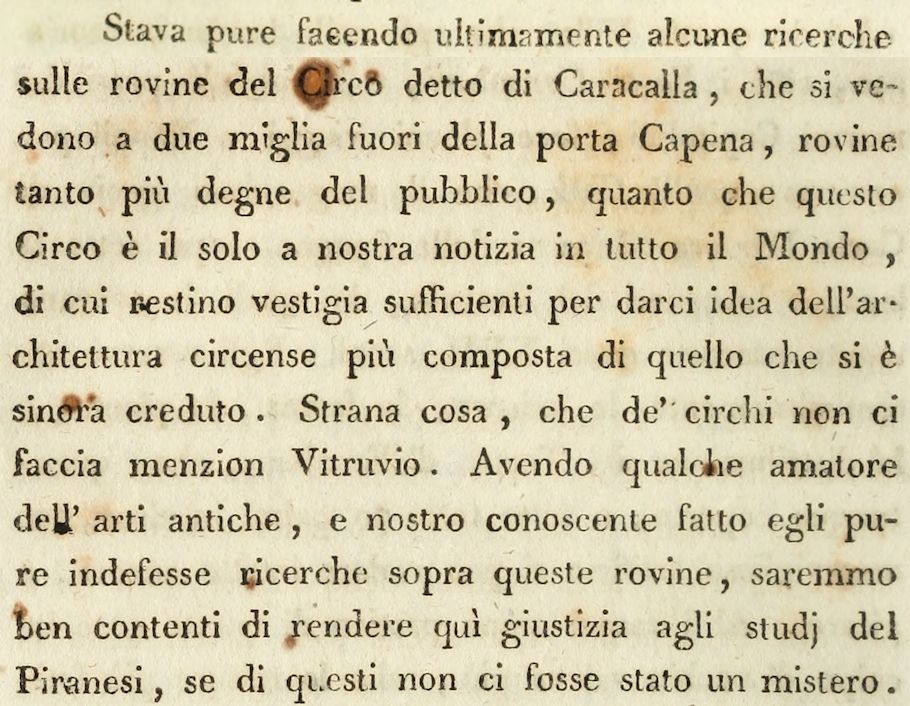
He was also doing some research lately on the ruins of the circus said of Caracalla, which can be seen two miles outside the Capena gate, ruins so much more worthy of publicity, since this circus is the only one we know in all the world over, of which sufficient vestiges remain to give us an idea of the circus architecture scene more composed than what has hitherto been believed. Strange thing, Vitruvius does not mention circuses. Having some lover of the arts ancient ones and our acquaintance also made tireless researches on these ruins, we would be happy to do justice to Piranesi's studies here, if of these there had not been a mystery.
--Opere del consigliere Gian Lodovico Bianconi bolognese, 1802, vol. 2, pp. 137-8.
3. This is a perfect ballast between the two Bianconi extremes. Outlier author, Newdigate, 1775, Roman diary entries.
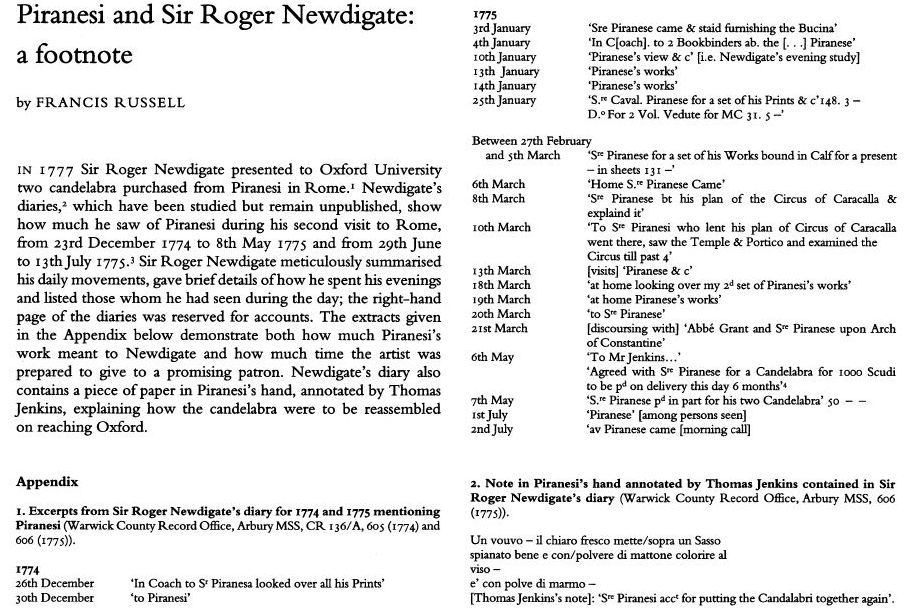
--The Burlington Magazine, CL, vol. August 2008, p. 547.
46 y.o. Francesco Piranesi 1804
Le Antichità della Magna Grecia Parte I
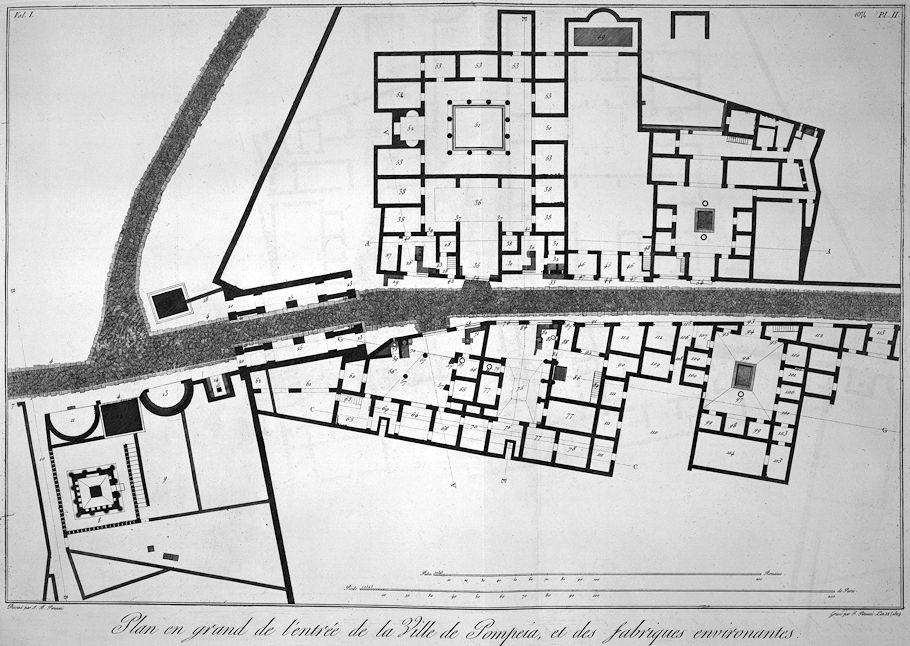
Large plan of the entrance to the City of Pompeii, and of the surrounding structures.
Drawn by G.B. Piranesi
Engraved by F. Piranesi Year 12 (1804)
30 June 1812 Tuesday
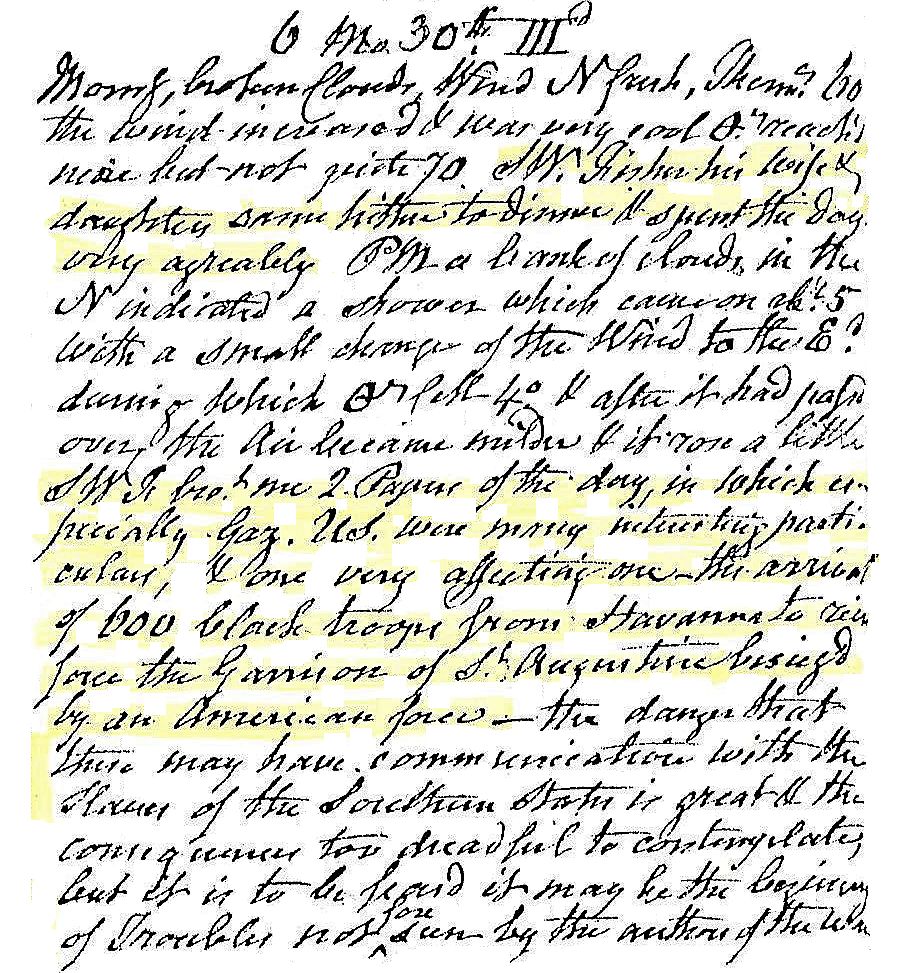
Morning broken clouds, wind N fresh, therm. 60. The wind increased and was very cool. Temperature reached more but not quite 70. SW Fisher, his wife and daughters came hither to dinner and spent the day very agreeable. PM a bank of clouds in the north indicates a shower which came on about 5 with a small change of the wind to the E, during which temperature fell 4° and after it had passed over the air became milder and it rose a little. SWF brought me 2 papers of the day in which especially Gaz. US. were many interesting particulars and one very affecting one--the arrival of 600 black troops from Havanna to reinforce the garrison of St. Augustine besieged by an American force--the danger that these may have communication with the slaves of the southern States is great and the consequences too dreadful to contemplate, but it is to be feared it may be the beginning of troubles not foreseen by the authors of the war.
30 June 2006
Re: Helen and the True Cross
[This email came to my email address alone (30 June 2006, 03:38 am EST.), yet I'm sure it was meant for the whole list.]
Yes, I think that the cross was found (or a piece of wood considered to be the cross) possibly when the Church of the Holy Sepulchre was built but that its inventio was only attributed to Helena later for specific motives. One of the motives was political and had to do with the conflict between Caesarea and Jerusalem about primacy in the church province of Palestine.
There are no historically reliable sources before the last decades of the 4th century that connect Helena with the inventio crucis. There are plenty of references to the Cross, to its finding (see Cyril's letter to Constantius II of 351) and its veneration in Jerusalem before that, but no mention of Helena. The one who probably first mentioned Helena's discovery of the Cross was Gelasius of Caesarea in his (now lost) Ecclesiastical History (c. 390); the core of his story of Helena's inventio crucis can be found in Rufinus' Ecclesiastical History.
As to S Croce in Gerusalemme, even if we assume that the information in the Liber Pontificalis is reliable, Helena and the inventio crucis are not mentioned. I believe therefore that the relevant passage in the LP (I.179) cannot serve as evidence for the finding of the Cross by Helena.
Dr. Jan Willem Drijvers
Re: Helen and the True Cross
Thank you, Jan Willem.
I will continue, however, to hold up the extreme case, i.e., that the legend of Helena and the True Cross did happen, and at its earliest possible date, 14 September 325. Additionally, a law of silence specifically regarding Helena-and-the-True-Cross was put into place soon after 25 July 326.
[It just occurred to me now that, besides keeping imperial control of the situation, there is another reason the law of silence may have come into place. If the event was a fabrication of Helena, Eutropia and/or Constantine, then the deaths of Crispus, Helena and Fausta may have been seen by Constantine and Eutropia (and perhaps even by Helena on her death bed) as signs that they did something very wrong, and thus a law of silence was the best way to 'enforce' that the event never really happened. Nonetheless, news of the (possibly fabricated) event was already in circulation for 10 months.]
Laws of silence are strangely powerful because the better they work, the less history gets to know what the silence was about. It appears, however, that breaking an imperial law of silence is not punishable by death, rather by exile--see St. Martin I, pope and martyr, died c. 656.
Between 25 July 326 and 25 February 395 (during which time the law of silence regarding Helena and the Cross was enforced) Bishop Athanasius and Bishop Cyril were committed to exile several times, and, before Athanasius and Cyril, Bishop Eustathius lost his see.
"Last night, in reviewing the case of the 'downfall' of Eustathius, bishop of Antioch, and its seeming connection to his having said something about Helena, it is mentioned that Eustathius was anti-Arian while Helena seems to have been pro-Arian, and thus maybe Eustathius said something along these lines. [The fall of Eustathius occurred sometime 326-328, and is one of the factors that leads modern scholars to believe that Helena was in the Holy Land/East during that period. I think that Eustathius did fall because he said something about Helena, but that his real crime was that he said something about Helena after her death in Rome July 326. In other words, Eustathius broke the 'silence' regarding Helena and the Cross that was somehow enforced by Constantine, and Eustathius' losing his see is a clear example to those living then under Constantine of what will happen if you too break the 'silence'. Interestingly, it is Athanasius of Alexandria that first tells us of the Eustathius/Helena connection, and he was also a supporter of Eustathius. Athanasius was exiled to Trier (where he might not be heard so well?) during the latter years of Constantine's life.]"
--Stephen Lauf, "re-reading VITA CONSTANTINI Book III" at lt-antiq listserv, 2001.08.18 [the feast of St. Helena]
Laws of silence are not only effectually beneficial for imperials, however. If you knew that one of your adversaries had broken a law of silence, a charge against your adversary could then be quickly brought to court. I now seriously wonder/speculate that the law of silence regarding Helena and the True Cross was also occasionally utilized as a powerful tool within the ongoing Arian controversy.
Last night, while reading of St. Cyril of Jerusalem in Butler's Lives of the Saints, the following passage struck me:
"Acacius thereupon, making his way to Constantinople, persuaded the Emperor Constantius to summon another council. Fresh accusations were made in addition to the old ones, and what particularly incensed the emperor was the information that a gold-brocaded vestment presented by his father Constantine to Marcarius for administering baptism had been sold, and had been seen and recognized on a comedian performing on the boards of a theatre. Acacius triumphed and obtained a second decree of exile against Cyril within a year of his vindication."
If such a charge against Cyril was really brought before Constantius, did Cyril really sell such an important vestment, especially since he himself was so closely involved with the baptisms that occurred at the Church of the Holy Sepulchre? It didn't take me long to think that the charge as recorded might be code for Cyril having done the worst, the unspeakable, i.e., that he spoke of that which by law he should be silent.
If Cyril did indeed speak of Helena and the True Cross, it may well have already happened before he was bishop of Jerusalem.
"He seems to have been ordained priest by the bishop of Jerusalem, St. Maximus, who thought so highly of his abilities that he charged him with the important duty of instructing the catechumens. His catechetical lectures were delivered for several years--those to the illuminandi, or candidates for baptism, taking place in Constantine's basilica of the Holy Cross, usually called the Martyrion, and those to the newly-baptized being given during Easter week in the circular Anastasis or church of the Resurrection. They were delivered without book... We find in them also interesting allusions to the discovery of the cross..."
--Butler's Lives of the Saints
Cyril's lectures occurred within the first decade of the publication of Eusebius's Vita Constantini. As a (probable) native of Jerusalem who was about 10 years old 14 September 325, did it bother Cyril that Eusebius omitted all mention of Helena with regard to the building of the Holy Sepulchre? Was Cyril, in his catechetical lectures, making sure that the newly-baptized Christians were aware of the full "real" story?
Is Gelasius of Caesarea's Ecclesiastical History (c. 390) "now lost" because it contained information that was illegal to publish at the time?
As to Santa Croce in Jerusalemme, the basilica and its Constantinian date are still important to the discussion of relics (and pilgrimage).
ps
I'm curious as to why Steve Mulburger excluded a passage from me when he demonstrated the 4th century "as even more eccentric" than he thought. Don't tell me there is a law of silence forbidding discussion of a law of silence.
Re: Helen and the True Cross
I am offering good evidence that very well points to a law of silence having been issued regarding Helena and the True Cross soon after 25 July 326. Perhaps argumentum ex ignorantia becomes quite strong when taken to an extreme.
Of course it is easier to try and swiftly push the whole argument aside, but perhaps, too, a sign of weakness.
30 June 2017
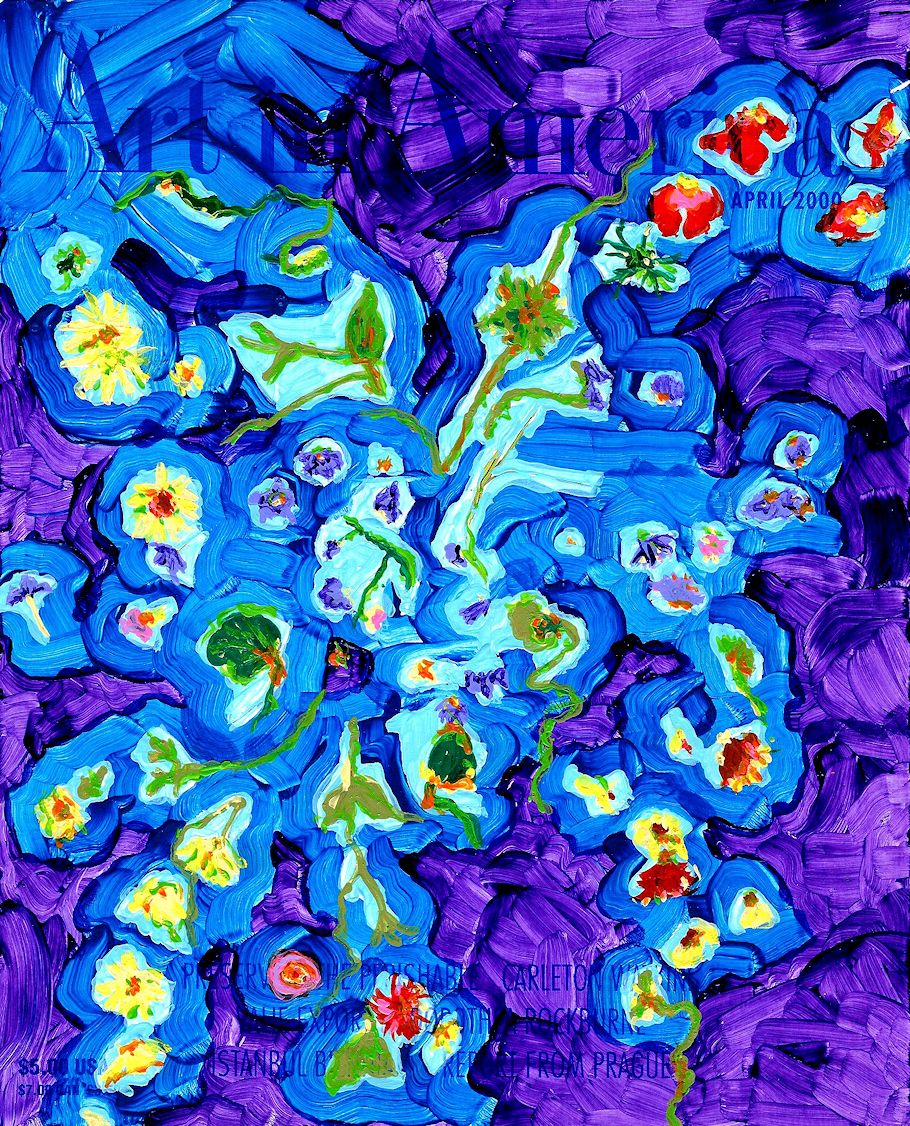
zero five nine
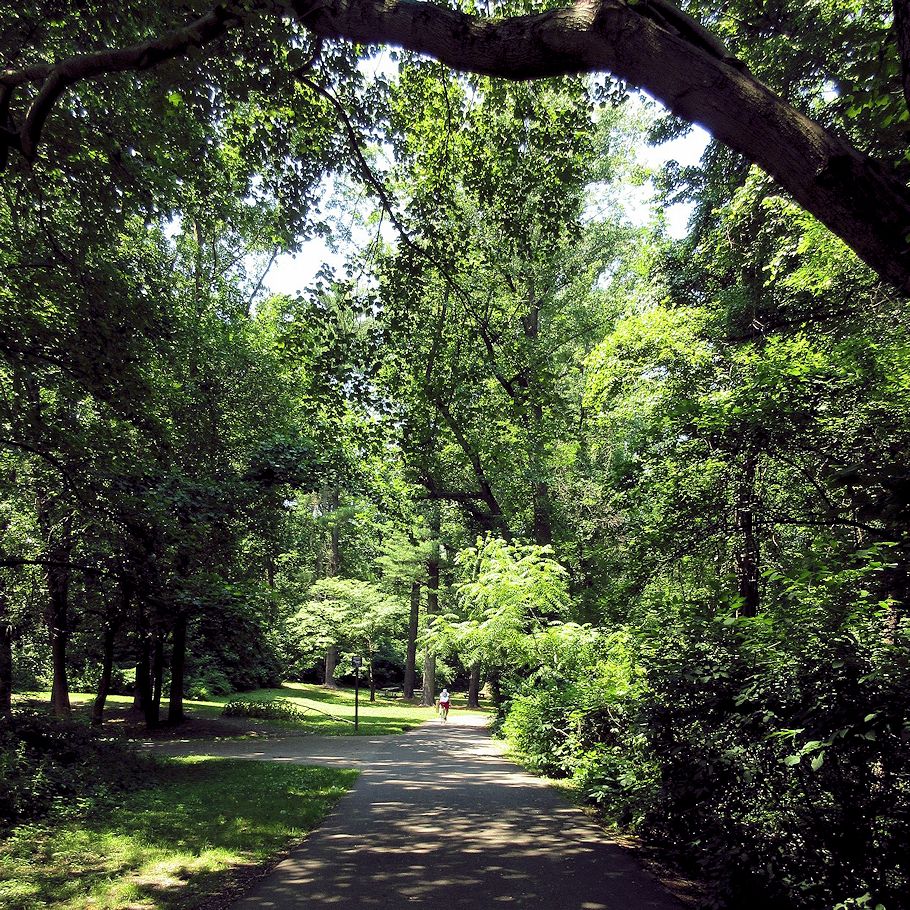
Pine to Verree and back 13:59
These are, no doubt, literally places where John James Audubon first explored the American landscape.
Today's Fox Chase Farm has been a farm since circa 1684, and Ury Farm was a catty-corner neighbor, hence the two farms were not at all dissimilar in appearance.
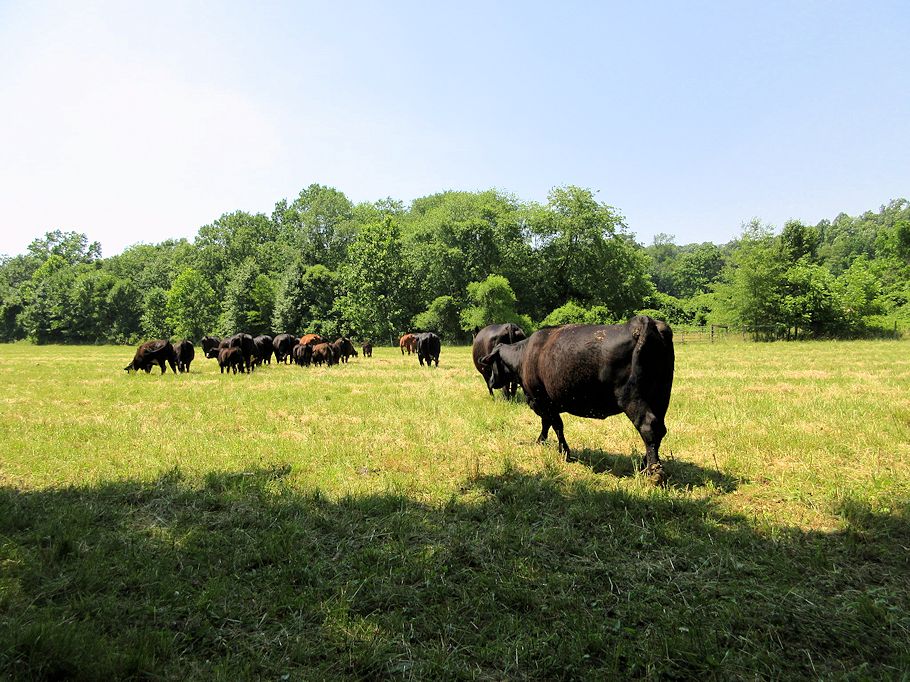
Fox Chase Farm 14:32
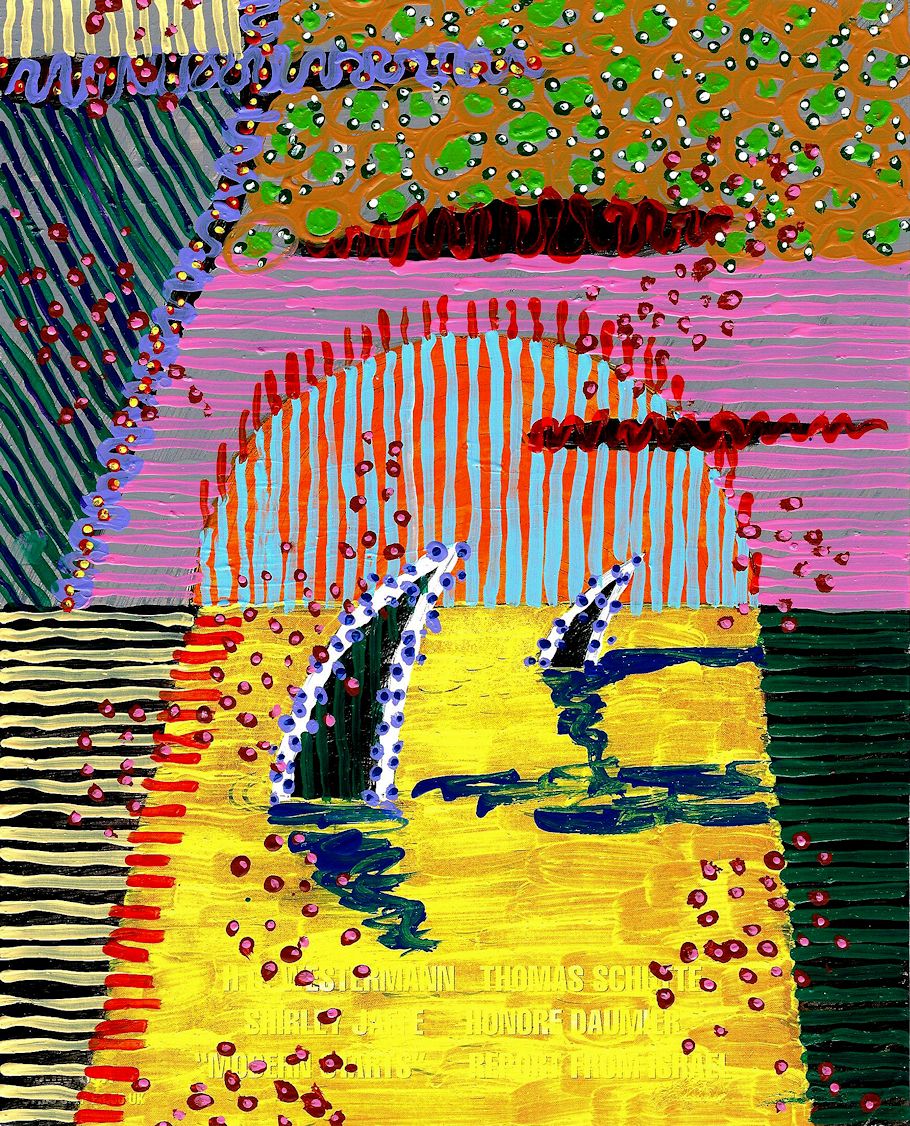
zero six zero
30 June 2019
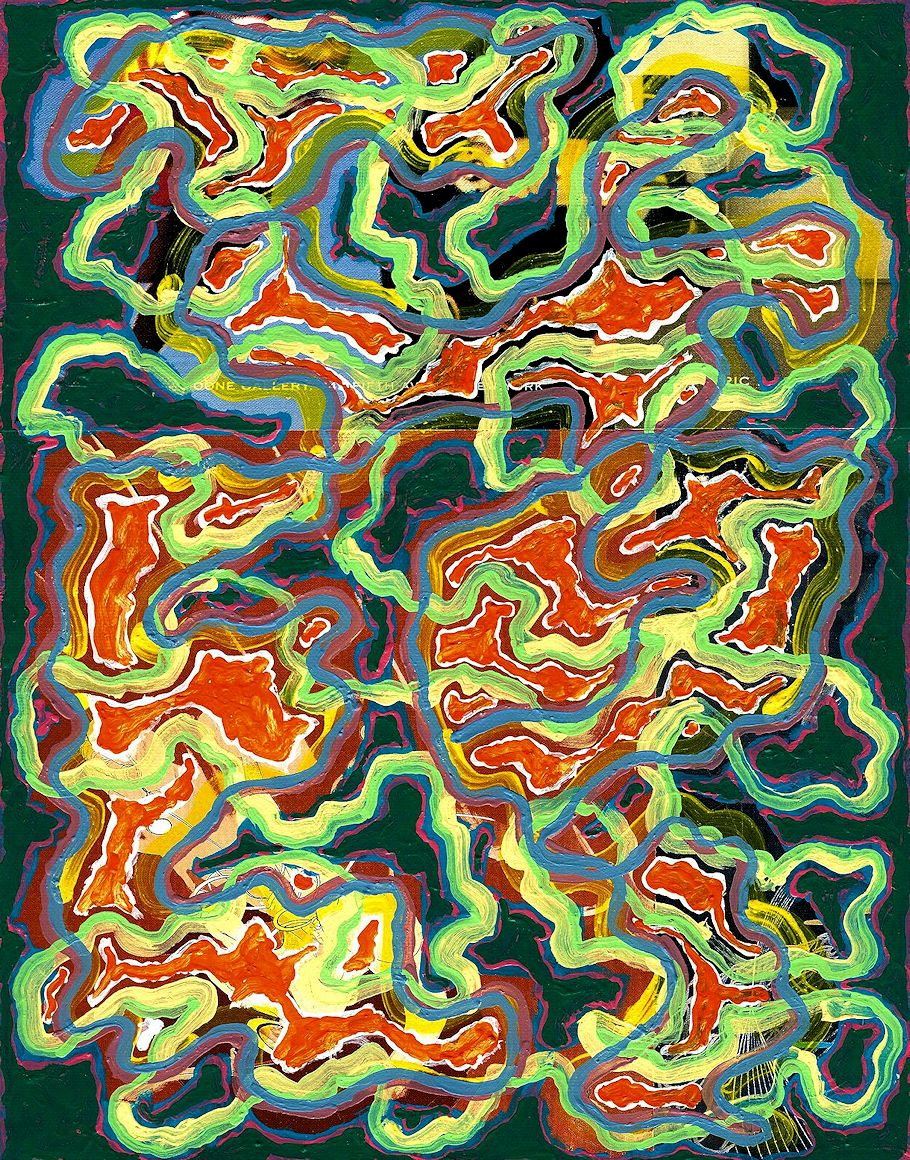
Mary Boone's 180 hours of community service hours 50 51
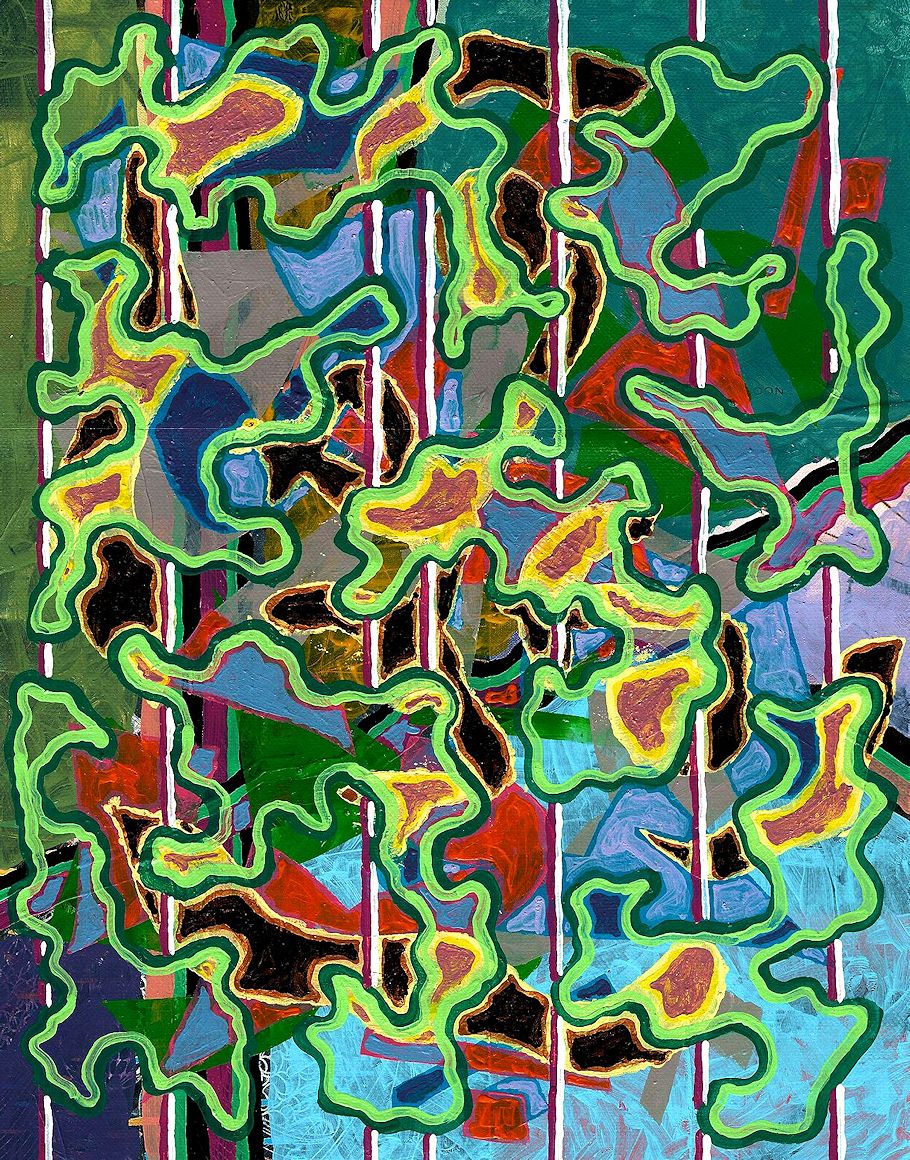
Mary Boone's 180 hours of community service hours 52 53
30 June 2023 Friday
A: A great Russian directed movie done in the "inspired by Sergei Eisenstein" style.
Q: What is The Bianconi vs Piranesi 'Circus of Caracalla' Affair?
|